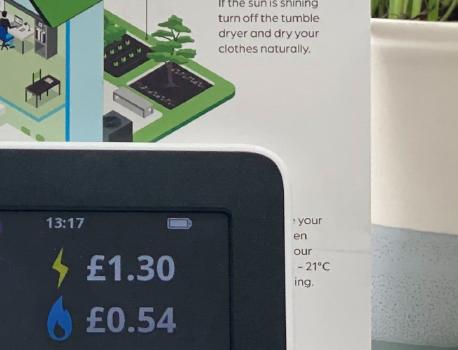Easy Ways to Boost Your Home's Energy Efficiency

Introduction:
With energy costs on the rise, many homeowners are looking for ways to reduce their utility bills and create a more sustainable living space. Fortunately, improving your home's energy efficiency doesn't have to be a daunting or expensive task. In this article, we'll explore some easy and practical ways to boost your home's energy efficiency and save money in the process.
Insulate Your Home:
One of the most effective ways to make your home more energy-efficient is to improve its insulation. A well-insulated home will keep heat in during the winter and cool air in during the summer, reducing your reliance on heating and cooling systems. There are several ways to insulate your home, including:
- Installing weather stripping around doors and windows to prevent drafts
- Adding insulation to your attic, walls, and basement
- Sealing gaps around pipes and ducts
- Using thermal curtains or blinds to trap heat
Example: Let's say you live in a cold climate and your home is poorly insulated. You might notice that your energy bills are higher in the winter months, as your heating system works harder to maintain a comfortable temperature. By adding insulation to your attic and walls, you can reduce heat loss and lower your energy usage, resulting in significant savings over time.
Upgrade Your Appliances:
Older appliances tend to be less energy-efficient than newer models, which can lead to higher energy bills and more environmental waste. Upgrading to newer, more efficient appliances can make a big difference in your home's energy usage. Some appliances to consider upgrading include:
- Refrigerators and freezers
- Washing machines and dryers
- Dishwashers
- Water heaters
- Furnaces and air conditioning units
Example: Let's say you have an old refrigerator that is using more energy than it needs to. By upgrading to an Energy Star-certified refrigerator, you can save up to $300 over the lifetime of the appliance. Plus, the new fridge will use less energy, which is good for the environment.
Use Energy-Efficient Lighting:
Lighting can account for a significant portion of your home's energy usage, especially if you use incandescent bulbs. Switching to energy-efficient lighting options, such as LED or CFL bulbs, can help reduce your energy consumption and lower your utility bills. Additionally, these bulbs last longer than traditional bulbs, which means you'll save money on replacements.
Example: Let's say you have 10 light fixtures in your home, each with a 60-watt incandescent bulb. By switching to 10-watt LED bulbs, you could reduce your energy usage by 500 watts per hour. If you use those lights for an average of three hours per day, you could save up to $75 per year on your energy bills.
Install a Programmable Thermostat:
A programmable thermostat allows you to set your heating and cooling systems to turn on and off automatically, based on your schedule. This can help you save energy and reduce your utility bills, especially if you program the thermostat to turn off when you're away from home or asleep.
Example: Let's say you work during the day and your home is empty for eight hours. With a programmable thermostat, you could set your heating or cooling system to turn off during that time, saving energy and reducing your utility bills. Over time, this could result in significant savings on your energy bills.
Seal Air Leaks:
Air leaks can lead to drafts, which can cause your heating and cooling systems to work harder than they need to. Sealing air leaks around doors, windows, and other areas of your home can help reduce drafts and improve your home's energy efficiency. Some ways to seal air leaks include:
- Using weather stripping around doors and windows
- Caulking gaps around window frames
- Installing draft stoppers on doors
Example: Let's say you notice a draft coming from under your front door. By installing a draft stopper, you can prevent cold air from entering your home and reduce your heating costs. Over time, these small changes can add up to significant savings on your energy bills.
Use Power Strips:
Electronics and appliances that are plugged in, but not in use, can still use energy. This is called "vampire power," and it can account for up to 10% of your home's energy usage. Using power strips to turn off electronics and appliances when they're not in use can help reduce your energy consumption and lower your utility bills.
Example: Let's say you have several electronics in your living room, including a TV, cable box, and game console. By plugging them into a power strip and turning off the power strip when you're not using the electronics, you can reduce your energy consumption and save money on your utility bills.
Conclusion:
Improving your home's energy efficiency doesn't have to be a complex or expensive task. By taking simple steps like insulating your home, upgrading appliances, and using energy-efficient lighting, you can reduce your energy consumption and save money on your utility bills. Additionally, using a programmable thermostat, sealing air leaks, and using power strips can help you save even more on your energy costs. With these easy and practical tips, you can create a more sustainable and energy-efficient living space for you and your family.


